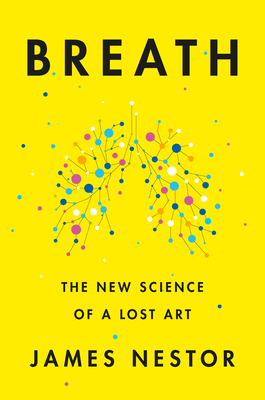
James Nestor’s Breath: The New Science of a Lost Art aims to reclaim something so fundamental, so instinctive, that it almost feels absurd to question it: the way we breathe. The premise is bold and intriguing our health, vitality, and even longevity, Nestor claims, depend on breathing correctly. It’s a fascinating hook that promises to merge ancient wisdom with cutting-edge science. Unfortunately, what begins as a compelling exploration into human physiology slowly drifts into the fog of pseudoscience and spiritual mysticism.
The book’s central argument is that modern humans have forgotten how to breathe properly, leading to an array of health problems. Nestor travels the globe to study ancient breathing practices such as Pranayama, Tummo, and Sudarshan Kriya, while also consulting scientists and “pulmonauts” experimenting with unconventional methods. Along the way, he suggests that simply adjusting how we inhale and exhale can improve athletic performance, reverse chronic diseases, and even straighten spines. It’s an appealing idea, but one that often feels too good to be true.
Critics have rightly pointed out that Breath stretches scientific credibility to its limit. Many of Nestor’s most extraordinary claims such as curing scoliosis or halting autoimmune disease through breathwork are presented without adequate data or peer-reviewed research. He frequently references “unpublished studies” and Stanford’s name in ways that give the illusion of legitimacy without actual academic grounding. For readers expecting rigorous science, this can feel misleading, even manipulative.
One of the book’s most frustrating aspects is its lack of proper citations. Instead of including footnotes or an in-book bibliography, Nestor directs readers to his website for references. This choice undermines the credibility of his arguments, especially when he presents claims that clash with established medical knowledge. As one reviewer noted, if these techniques were truly revolutionary, physicians and researchers would be adopting them widely.
However, to dismiss Breath entirely would be unfair. Many readers have found genuine personal benefit in its practices. For some, experimenting with controlled breathing techniques led to improved sleep, reduced anxiety, and better posture. These results, while anecdotal, highlight the undeniable link between breath and mental calm. After all, breathwork has long been a cornerstone of meditation and stress reduction.
The problem lies in Nestor’s tendency to overreach. By blending solid physiological insights with New Age metaphysics, he blurs the line between evidence-based practice and spiritual ideology. His discussion of “prana,” “invisible energy,” and yogic metaphors leans more toward mysticism than science. In doing so, he risks alienating skeptical readers who came for biology, not belief systems.
Still, Breath succeeds in one crucial way: it gets people to think about how something as simple as inhaling and exhaling affects their lives. If you read it as a philosophical or motivational work rather than a medical manual, it can inspire meaningful self-reflection. But if you expect scientific rigor, approach it with caution.
Ultimately, Breath: The New Science of a Lost Art straddles an uneasy line between revelation and exaggeration. It’s part valuable insight, part charismatic storytelling, and part speculative wellness guide. Whether you walk away enlightened or skeptical depends on what you’re looking for a meditative journey or a scientific explanation.
If you’re curious to explore it for yourself, you can find Breath on Amazon here: Buy the book.


